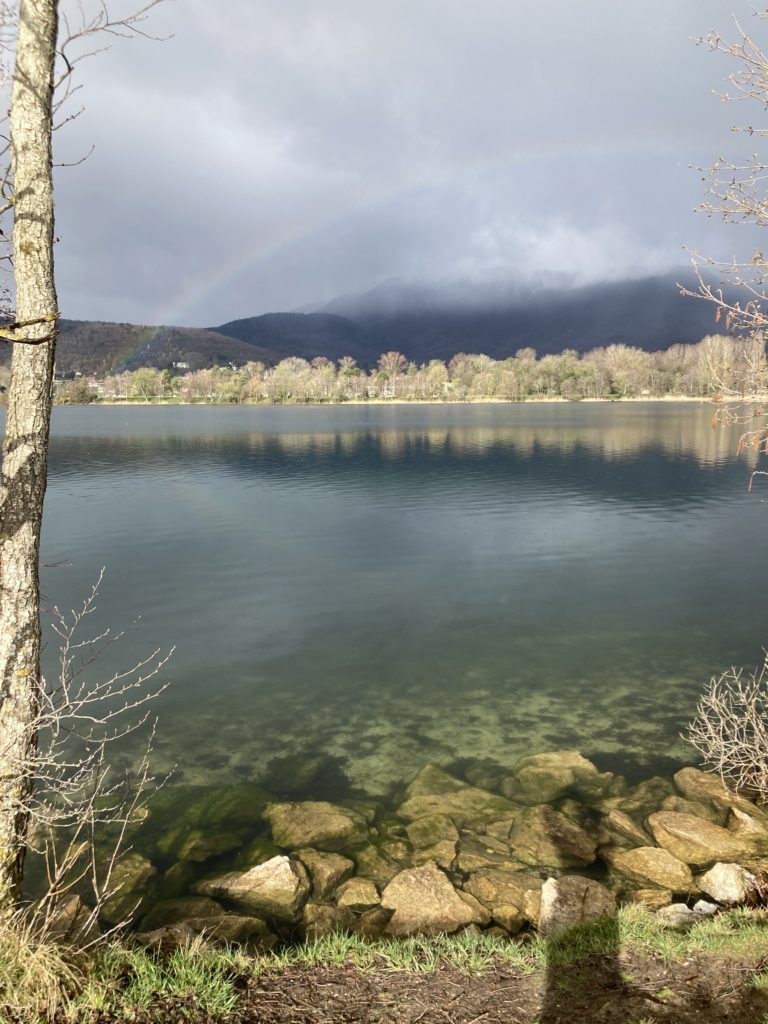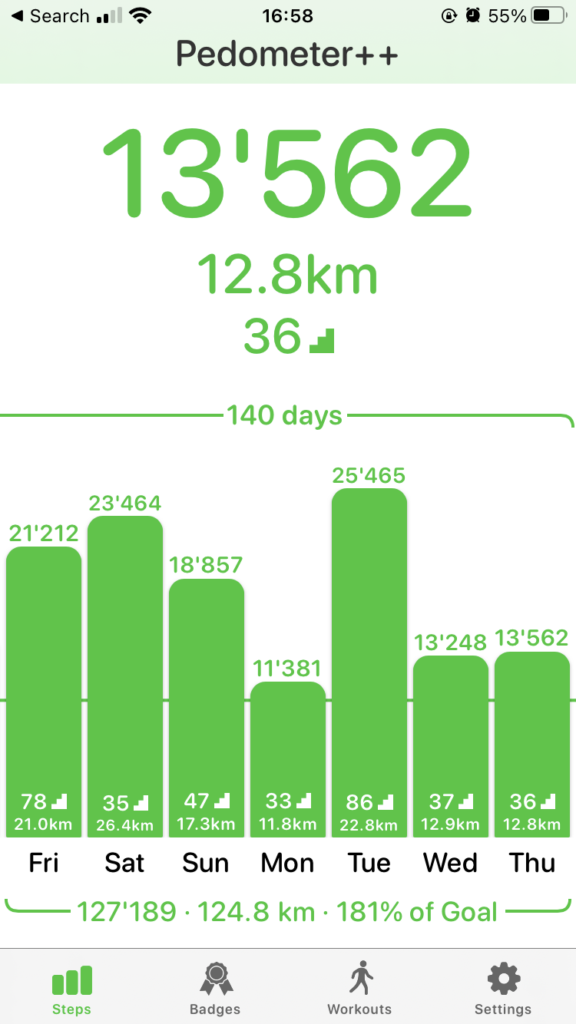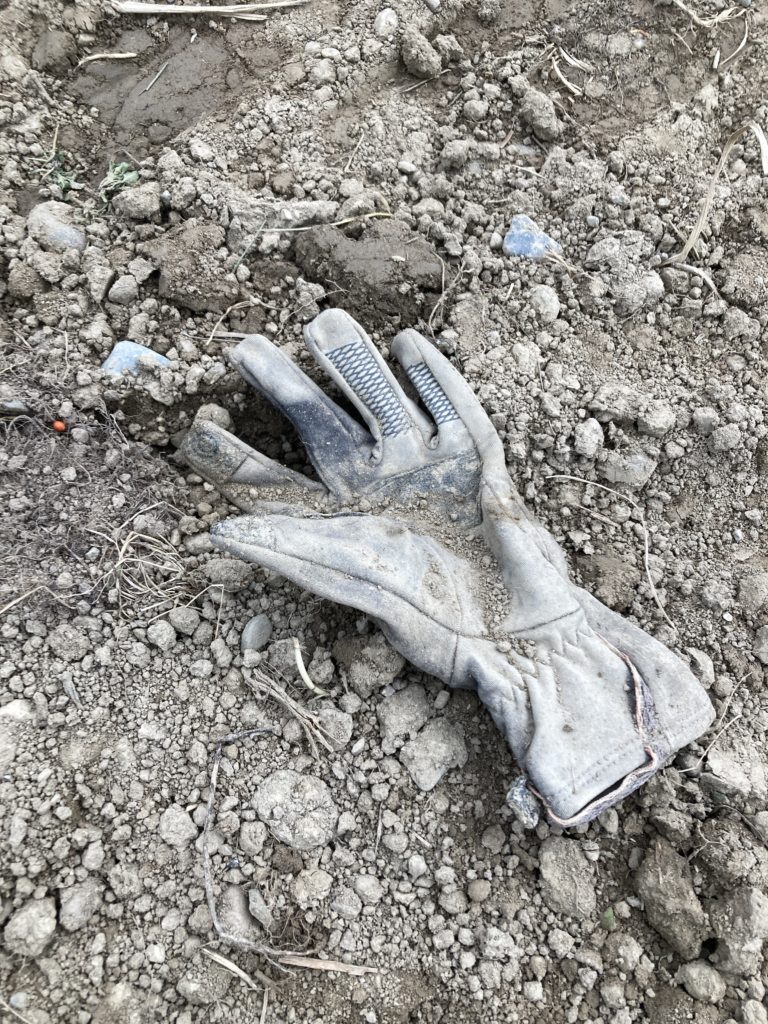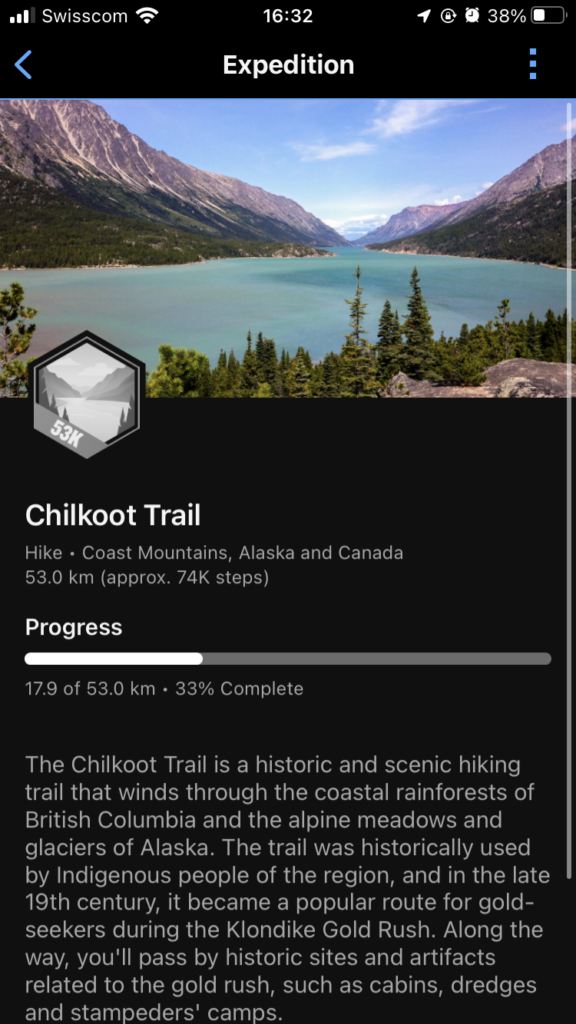The easiest sport to practice every day is walking. We can walk to the bus stop, train station or other places every single day. We can walk in the morning, we can walk at the shops, and we can walk at lunch time or in the evening. All of these walking opportunities mean that shoes are on our feet for hours at a time and need to be comfortable. That’s why playing with Vapor Gloves and Trail Gloves makes sense. I have now walked twenty kilometres in both.
Vapor Gloves 6
The vapor gloves are thin, flexible shoes that you can roll up, almost like a sock. They are so light and flexible that you really feel the ground beneath your feet which is great if you’re on sand, wood chips, mud or grass but not ideal if you’re on tarmac. Remember our ancestors might have been barefoot or worn thin soled shoes but they weren’t walking on tarmac for hours at a time. For this reason the vapor glove requires some training and conditioning. I like the vapor gloves except for the lack of padding under the heel.
If you have been in an apartment or house then you’re used to the sound of people walking barefoot and banging their heels on the ground, to sound heavier than they are. With the Vapor Glove you experience this problem when you’re walking, especially when you’re a strider like me. With the Vapor Glove I need to make a conscious effort not to strike the ground with my heel.
Relearning to walk
With the Vapor Glove you need to relearn how to walk. When you walk at home you’re not striding so you don’t need to be as disciplined about walking style. When you’re walking at full speed down a tarmac path you do. I have to consciously think about how to put my foot down, at each step, not to hit the heel too hard. This can be quite tiring. That’s why they speak of re-learning to walk with barefoot shoes.
Trail Gloves 7
Although the Vapor Glove 6 and Trail Glove 7 have the same tread pattern the thickness of the soles is different. The stack height on the trail glove 7 is 14mm compared to just 6mm with the vapor glove. By doubling the sole of the shoes the trail glove is much more comfortable for my walking style. With big strides the habit is of hitting the ground with the heel several thousand times per walk. This is a habit that was picked up with modern shoes, where the soles are designed to be forgiving of this walking style.
The Trail Glove 7, by having thicker souls are more forgiving of this walking style. I have walked 20km with them in two days and they’re comfortable for me. I could see myself replacing conventional shoes with these.
Idealism and Reality
When I worked as a luggage handler I always wore gloves. I worked with colleagues who refused to wear gloves because they felt that they didn’t have the dexterity that they wanted. I learned that by wetting gloves, you could soften them to become like a second skin.
Climber and Luggage Handler Hands
The luggage handlers who never used gloves had hard, hands, that had been toughened and scared by being exposed to luggage handling work. Remember that think about office workers having soft hands compared to manual labourers? The same is true of feet that have been protected by shoes.
Natural padding
I remember seeing the feet of someone that walked barefoot rather than with shoes. The feet were naturally padded, by years of walking barefoot.
Transitioning to barefoot shoes is not just about having a desire to wear different shoes. It is also about adapting the padding of our feet to not being assisted by shoes anymore.
Road Surfaces
If you walk from village to village there is a good chance that you have to walk along roads that are covered in tarmac or concrete. We no longer walk on soil, grass or sand. We walk on hard surfaces where the impact of every step is transmitted up through our body. With the vapor glove shoes I feel that I may injure my knees and heel from impacting the ground too hard. With the trail gloves I don’t get that feeling.
A Five Hundred Meter Run
I tried running in the trail gloves but don’t like the sensation yet. I need to get used to walking in them, before I can push forward with running. As I said before, my feet need to grow used to this type of shoes.
Better Balance in the Shower
A few years ago I broke my arm. As a result of this showering, for several weeks was less practical than usual. I noticed, when I could move normaly, that my sense of balance had gone. By wearing barefoot shoes I noticed that my balance, when soaping feet, has come back.
Cleaner
In previous decades and centuries every building had a shoe scraping thing at the entrance. People with muddy shoes could scrape the mud off of their shoes before entering. Modern buildings are designed for car bound people so muddy shoes are not considered.
I have some MH-900 shoes with deep treads that I haven’t worn down yet. These treads are great to keep you from slipping and sliding in the mud. Recently I walked, on a muddy day and didn’t check my shoes before entering the building. I left a trail of mud and this angered the people I share a building with.
I have a shoe scraping brush in my post box, and a second one in the basement. If and when I come home with muddy shoes I can scrape the shoes before heading upstairs.
With minimalist shoes the tread is tiny and the shoes are flexible. If they do get muddy there is a good chance that the mud will be dislodged by walking, without the need to spend half an hour scraping shoes.
In the 21st century people complain about mud, without knowing the solutions. The incident filled me with anxiety.
And Finally
Although I love the concept of walking in vapor gloves I feel that I need to condition my feet to barefoot walking via the Trail Gloves first. Everywhere I read “Wear them for half an hour a day at first, and then transition to wearing them more often”. From walking the last 20 kilometres over two days, with the trail gloves, I feel comfortable in wearing these shoes, as my ordinary shoes.












